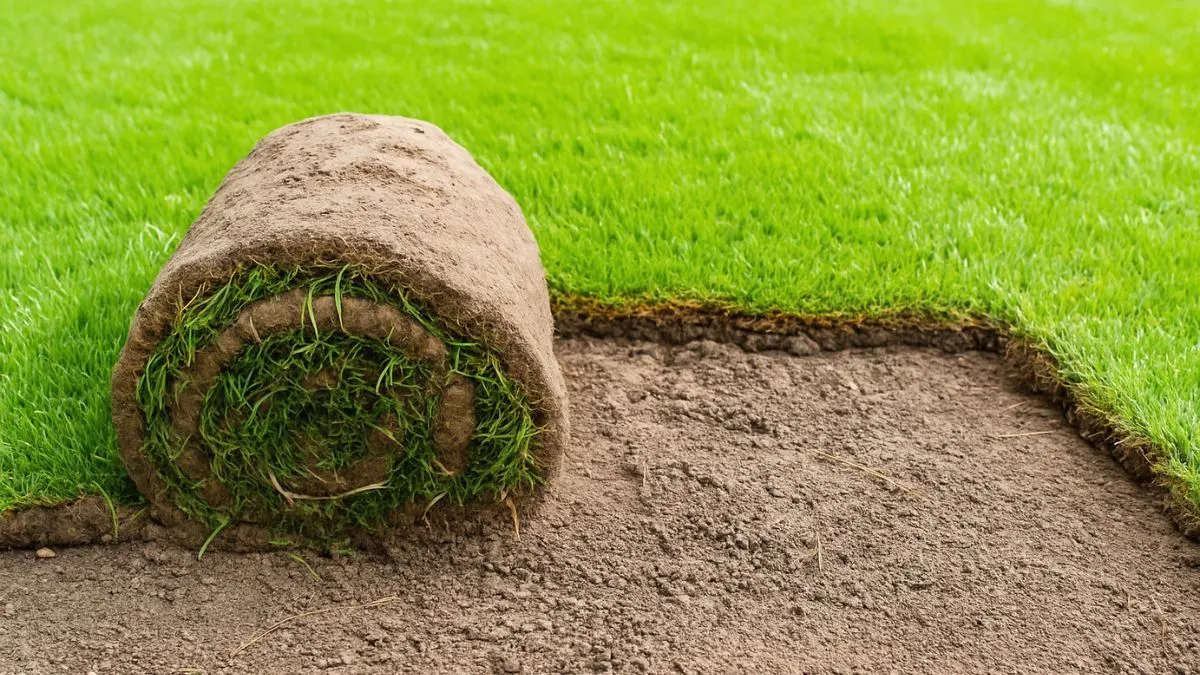A lawn is more than just grass. It’s the heart of your garden, a place for relaxation, family gatherings, and curb appeal. Creating a picture-perfect lawn doesn’t happen overnight, but with the right steps, anyone can transform a patch of soil into a vibrant green retreat.
Whether you live in Canada, the USA, or anywhere else in the world, the principles of lawn care are universal. In this guide, I’ll walk you through everything—from soil preparation to feeding, watering, mowing, and edging—so you can proudly say you’ve mastered the art of lawn care.
Step 1: Prepare the Soil

Before you think about grass seed or sod, you must prepare the soil. This is the foundation of a healthy lawn.
- Begin by testing and preparing the soil. A soil test will reveal the pH level and nutrients.
- Most grasses prefer a pH between 6.0 and 7.0.
- Remove weeds, stones, and debris from the area.
- Loosen compacted soil with a garden fork or aerator for better water and nutrient absorption.
👉 Personal Tip: When I first prepared my own lawn, I skipped soil testing. The result? Patchy, uneven grass. After correcting the pH with lime, the transformation was remarkable.
Also Read: This Flower Blooms Even in Frost—Meet the Magical Ice Plant!
Step 2: Choose the Right Grass
Different climates require different grasses.
- In cooler regions like Canada, Kentucky bluegrass and fescues thrive.
- In warmer parts of the USA, Bermuda and Zoysia grasses are more suitable.
- Always choose a high-quality grass type suitable for your climate to avoid constant replacements.
Step 3: Seeding or Sodding
You have two main options:
Seeding
- Cost-effective but requires patience.
- Plant seeds about a quarter-inch deep and cover lightly with soil.
- Keep soil consistently moist until seeds germinate.
Sodding
- Instant results but more expensive.
- Great for homeowners who want a perfect lawn immediately.
Step 4: Watering the Right Way
- Newly seeded lawns need daily watering until the grass establishes.
- For established lawns, water deeply 2–3 times a week instead of frequent light watering.
- Avoid watering in the middle of the day as much of it evaporates.
Also Read: Mexican Sunflower: The Bold Bloom That Attracts Bees, Butterflies And Neighbors!
Step 5: Feeding Your Lawn
The secret to a green lawn? Feed 4 times a year.
Season |
What to Apply |
Why It Matters |
Early Spring |
Nitrogen-rich fertilizer |
Jumpstarts growth |
Late Spring |
Balanced fertilizer |
Thickens grass |
Summer |
Slow-release fertilizer |
Withstands heat |
Fall |
Potassium-heavy fertilizer |
Strengthens roots for winter |
Step 6: Mowing Techniques
- Never cut more than one-third of the grass height at a time.
- Mow regularly to encourage thicker growth.
- Keep blades sharp for a clean cut.
Step 7: The Power of Edging
A lawn isn’t complete without crisp borders.
- Well-trimmed, neat edges are essential for a professional look.
- Use a string trimmer or edging tool along walkways and flowerbeds.
- Neat edges give your lawn a polished finish that instantly boosts curb appeal.
Also Read: Alliums: The Fireworks of the Flower World
Step 8: Seasonal Lawn Care
Spring
- Rake out dead grass and debris.
- Reseed bare patches.
Summer
- Water deeply.
- Mow higher to protect roots from heat.
Autumn
- Stockpile leaves for compost instead of bagging them.
- Plant trees, shrubs, and roses to prepare for next year.
- Plant spring bulbs now for a colorful bloom in the new season.
Winter
- Minimize foot traffic on frosty grass.
- October is the perfect time to prepare your garden for the winter months by fertilizing and aerating.
Personal Experience
When I renovated my backyard, I underestimated how much edges matter. The grass was green, but without neat lines, it always looked messy. Once I invested in an edger, the lawn transformed instantly. My neighbors even asked which landscaping service I had hired—it was just proper edging and regular feeding!
Also Read: Duranta Erecta: The Low-Maintenance Beauty With Golden Berries
Extra Tips for a Perfect Lawn
- Aerate annually to allow oxygen to reach roots.
- Overseed thin areas in fall for thicker growth.
- Mulch grass clippings back into the soil for natural fertilization.
- Avoid heavy foot traffic on wet grass to prevent compaction.
- Use organic fertilizers for an eco-friendly approach.
Creating the perfect lawn takes patience, but it’s rewarding. With consistency, your lawn will turn into the green oasis you’ve always dreamed of—whether in Canada, the USA, or anywhere in the world.
👉 So, are you ready to grab your gardening gloves and start building your dream lawn today?






